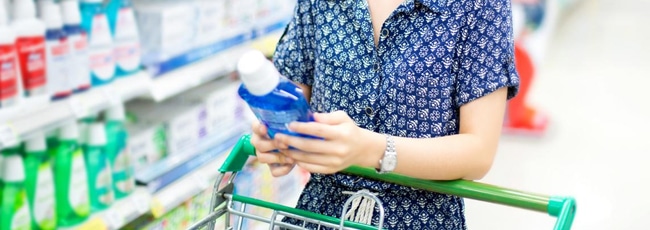What’s In Your Mouthwash

If you’ve ever looked at the ingredients label of your mouthwash, there’s a good chance that you were confused by what you found.
There are a lot of ingredients in mouthwash that may be unfamiliar to you. Here are some of the mostly commonly found ingredients in mouthwash and what they do.
- Alcohol: Many antiseptic mouthwashes contain up to 25% alcohol. Alcohol has anti_bacterial properties, which help to kill the bacteria that causes gingivitis. There are some downsides to alcohol: it can cause a burning or stinging sensation and can also be drying.
- Lactoperoxidase, Lysozyme or Lactoferrin: These are enzymes that act as substitutes for the enzymes in saliva. They also have anti-bacterial properties. These enzymes can also help to alleviate dry mouth.
- Cetylpyridinium chloride: This is an antiseptic chemical compound commonly used in mouthwashes because of its antibacterial properties.
- Chlorhexidine: This is a chemical compound found only in prescription mouthwashes because prolonged usage can cause staining on the teeth and the tongue. It is also an antiseptic that helps to kill bacteria and reduce plaque.
- Sodium lauryl sulfate or sodium benzoate: These are detergents that are used as a foaming agent in many oral healthcare products.
- Essential oils: Oils such as menthol and eucalyptus help to freshen breath, but they also have antibacterial properties as well.
- Fluoride: This is a chemical compound that strengthens tooth enamel by making it stronger and more resistant to cavities.
Remember, mouthwash should not be used as a replacement for daily brushing and flossing.
Source:
http://www.berkeleywellness.com/self-care/over-counter-products/article/what-you-should-know-about-mouthwash
https://en.wikipedia.org/wiki/Mouthwash

